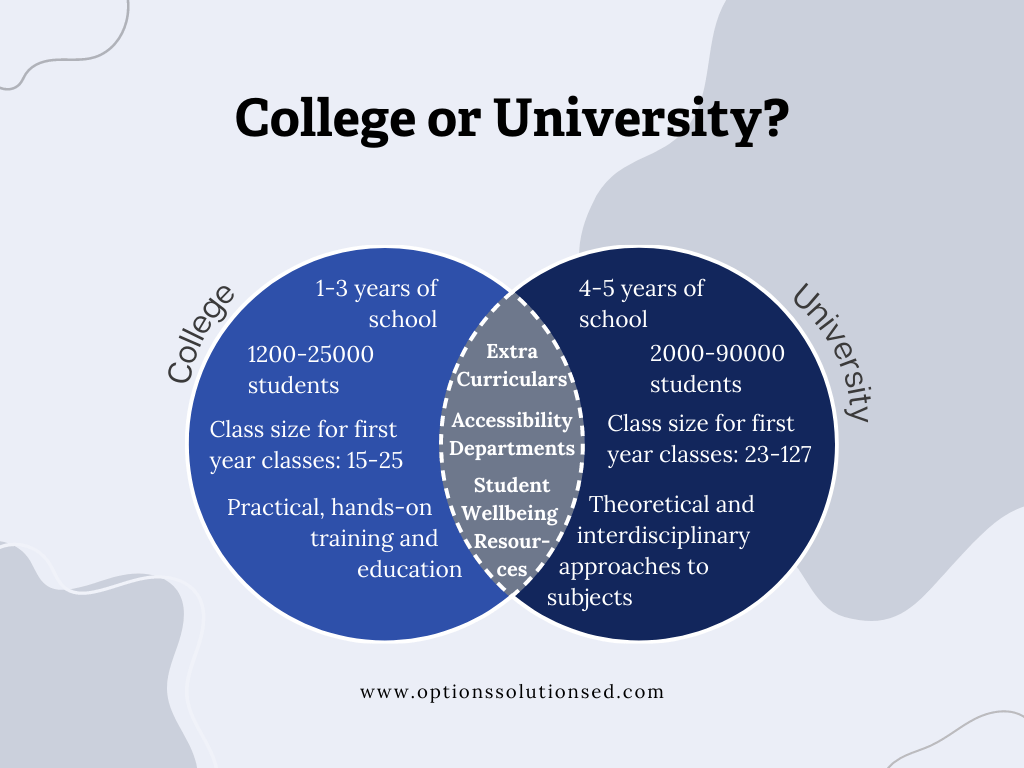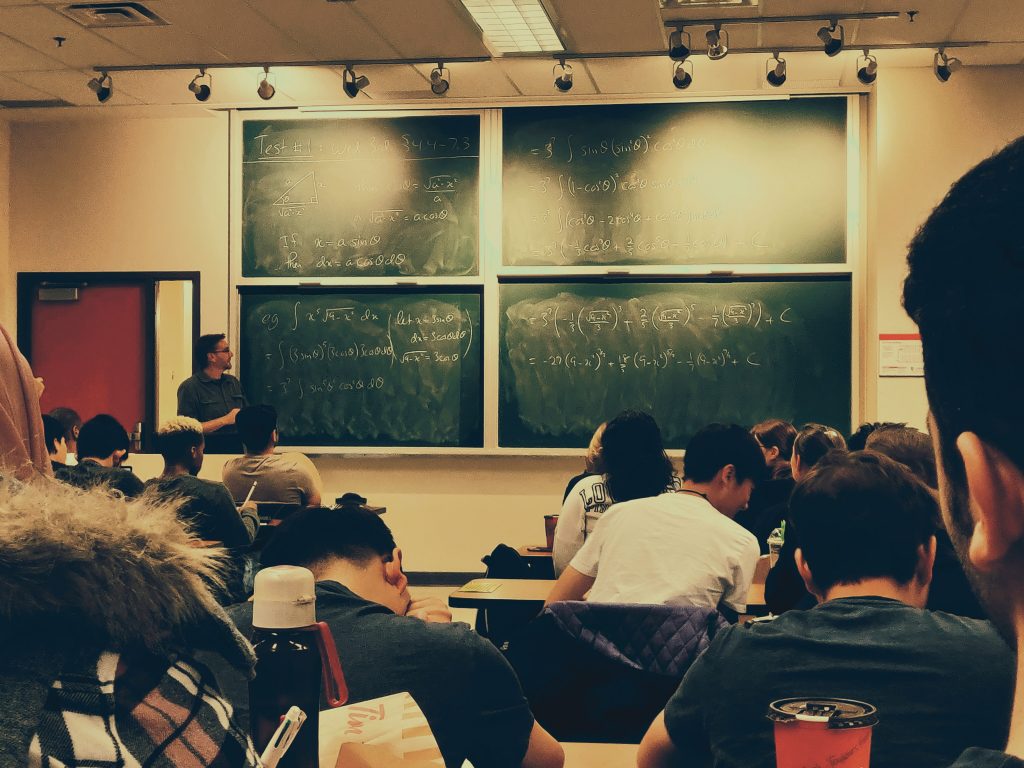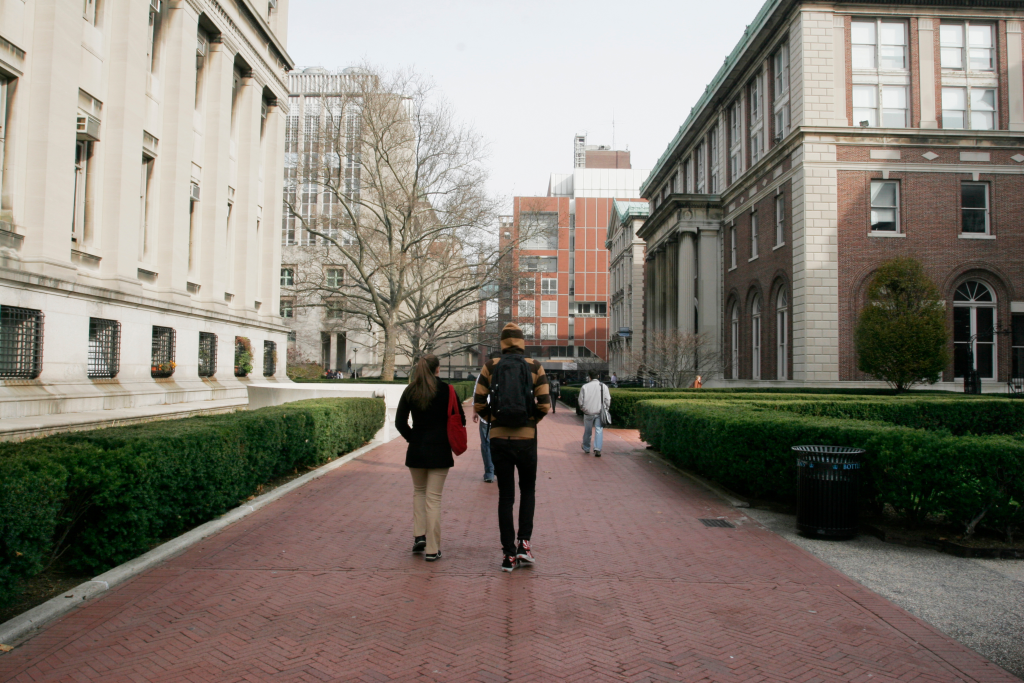We know it’s no easy task trying to decide between college and university. While sometimes a student’s path is clear due to the educational requirements of their chosen career, it’s often the case that students can reach their goals through various means of post-secondary studies. With this in mind, we’re breaking down the major differences between Canadian colleges and universities to help students and their families get a better idea of which opportunity will fit them best.

Class sizes
University: Depending on the size of the university, most first-year courses will feature large class sizes or lectures. At some of the large schools, students can expect to sit in lecture halls with hundreds—and sometimes even thousands—of classmates. As they progress through their studies, students can come to expect smaller classroom sizes, but it is uncommon to be in a course with fewer than 20 students.
College: Many students are drawn to college programs because they typically feature smaller class sizes. Even in first-year courses, college classes generally have fewer than 100 students; more commonly, students share a classroom with 15-25 classmates. In most cases, college classes resemble high school classrooms, which can foster a more intimate learning environment, more student interaction, hands-on learning, and one-on-one time with professors and instructors.
Action: Students should reflect upon how they learn best and what settings will help them succeed.
Type of learning
University: Curricula vary greatly across university faculties and subjects. However, especially in their first years of study, students can expect to learn about theoretical and conceptual frameworks, ethics, methodologies, social, cultural, and political intersectionality, and interdisciplinary approaches. Every university program also integrates, in some fashion, scholarly research. Students will likely compose essays and reports, complete (group) projects, labs, and analyses, and oral presentations.
College: Depending on the program of study, curricula differ significantly. Some students will attend college to take courses that can transfer to a university degree after a year or two. Colleges are also able to offer practical, hands-on training and education. These applied, specialized studies develop students’ skills in areas including broadcasting, cooking, construction, event planning, and trades. Though students can still take elective courses as part of their studies, most programs are streamlined to offer relevant, required classes and apprenticeships.
Action: Students should research career paths and determine what training is required.


The best of both worlds
Colleges and universities offer a variety of sports, extra-curricular activities, and volunteer opportunities to strengthen their campus life. Both will also provide physical, mental, and sexual health resources to promote students’ safety and wellbeing. Colleges and universities also do their best to follow students’ academic accommodations. Students are invited to register with their school’s appropriate department (i.e., Student Services, Student Accessibility Center, Student Success, etc.) to discuss their many options.
It is important to note that colleges and universities do not operate on a hierarchy; rather, they operate on a horizontal learning spectrum that is designed to meet students’ needs, interests, and preferences.
If you need any help deciding between college and university, or would like to discuss which programs may be a good fit for you, do not hesitate to schedule an appointment with an Educational Consultant!




